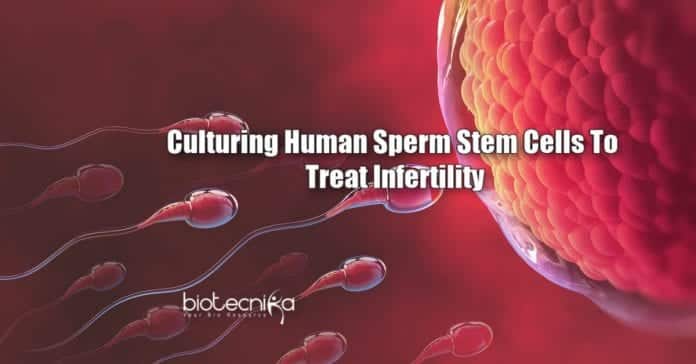Infertility is a reproductive disorder that affects one in seven men globally. Spermatogonial stem cell (SSC) therapy is one method for treating male sterility. This method transfers sperm stem cells in the testis to a test tube, culture, and nudge them into becoming fully-functional sperm. However, identifying the right conditions to get human SSCs to grow in the lab was challenging. Several researchers made attempts, but it was not clear the cells cultured were actually SSCs.
Now a reliable method for culturing human SSCs has been developed by researchers at the University of California San Diego School of Medicine. The results got published in the journal Proceedings of the National Academy of Sciences on July 13, 2020.
Miles Wilkinson, Ph.D., Distinguished Professor in the Department of Obstetrics, Gynecology and Reproductive Sciences at UC San Diego School of Medicine who was the senior author of the paper said several techniques, including single-cell RNA-sequencing analysis, backed this approach which is a crucial step toward bringing SSC therapy into the clinic.
Even beyond the age of 65, men can father children with the help of SSCs. These cells have the ability to self-renew and make many more SCCs and then develop into sperms
that men, including transgender, non-binary and gender-fluid people, can produce more than 1,000 new sperm every few seconds.The difficulty in distinguishing SSCs from other cells in the testes has been a hindrance to progress in this field. A major leap happened when several researchers, including the Wilkinson team, used a single-cell RNA sequencing technique to characterize the molecular features specific to human SSCs.
Using the single-cell RNA sequencing information, they purified cells like human SSCs. They showed that the cells they purified were highly enriched in SSCs, using a method called germ-cell transplantation. To understand the conditions that might best support the growth of SSCs in the lab, the team gathered the profile of genes expressed by human SSCs. They determined the right conditions required to culture immature germ cells with the characteristics of SSCs using more than 30 human testis biopsies.
They identified an inhibitor of the AKT pathway as the key ingredient that controls cell division and survival. Currently, several AKT inhibitors are used to treat cancer.
The cells with molecular characteristics of sperm stem cells were cultured for two-to-four weeks with this approach. The researchers are now planning to study how to maintain and expand human SSCs longer so they might be clinically useful.






























